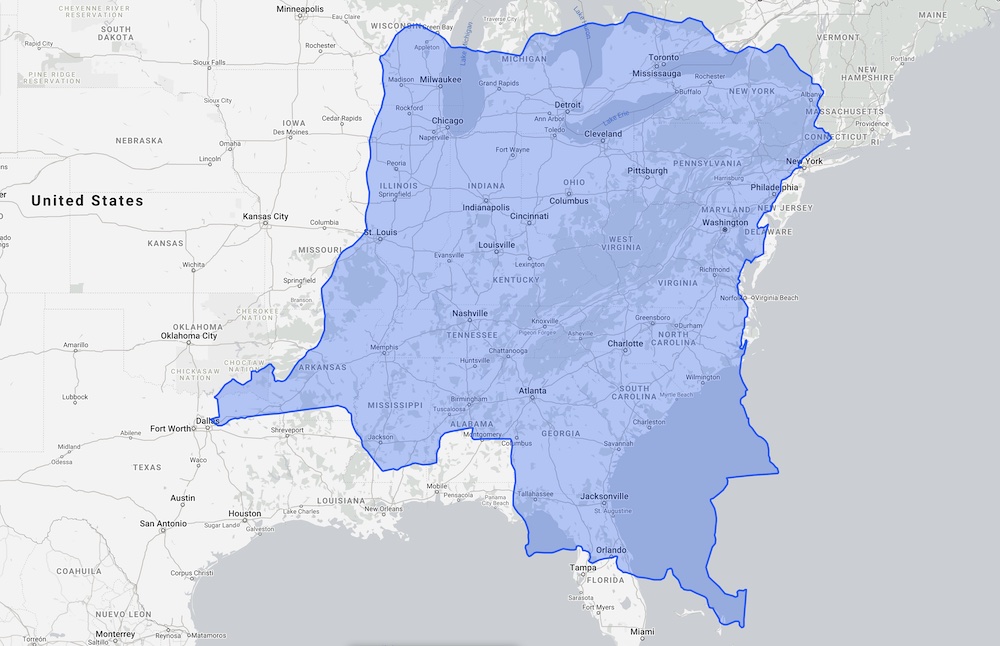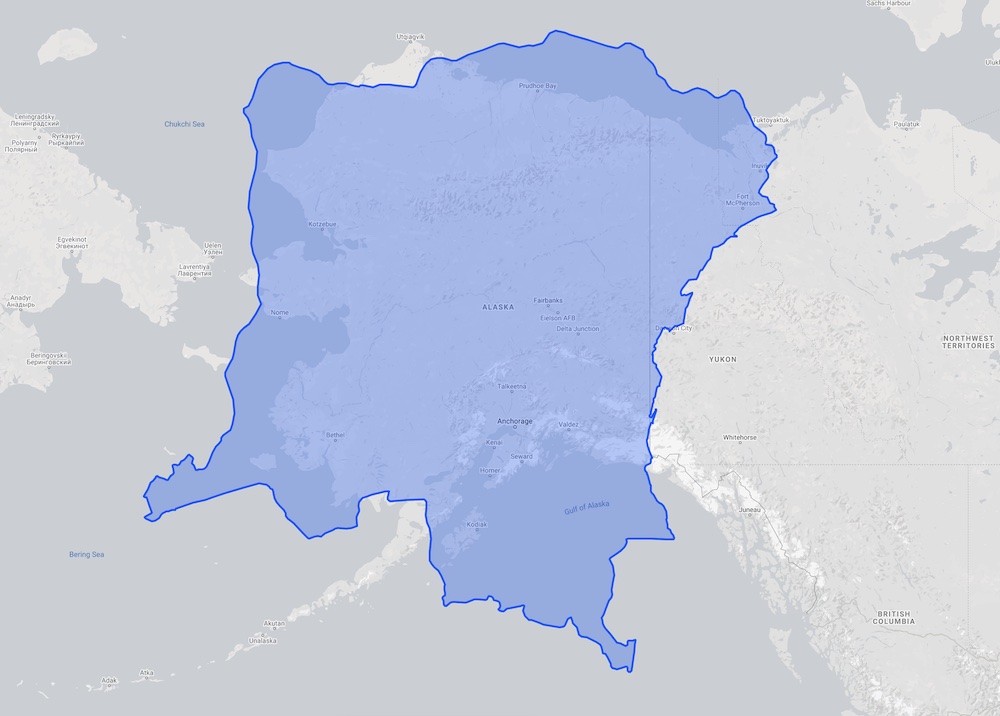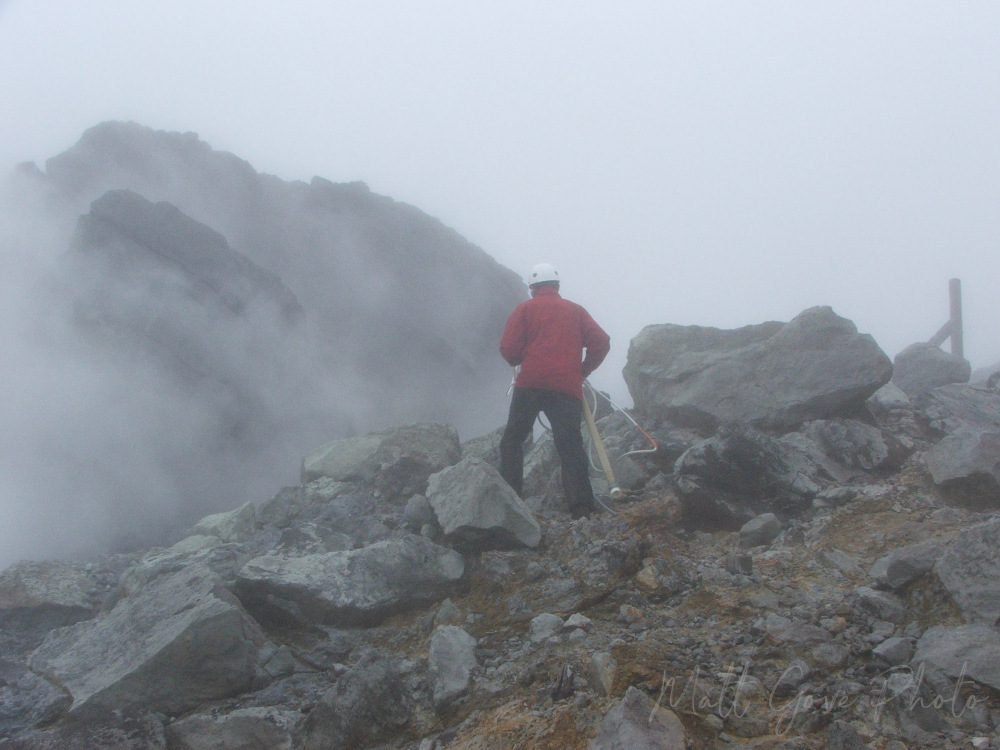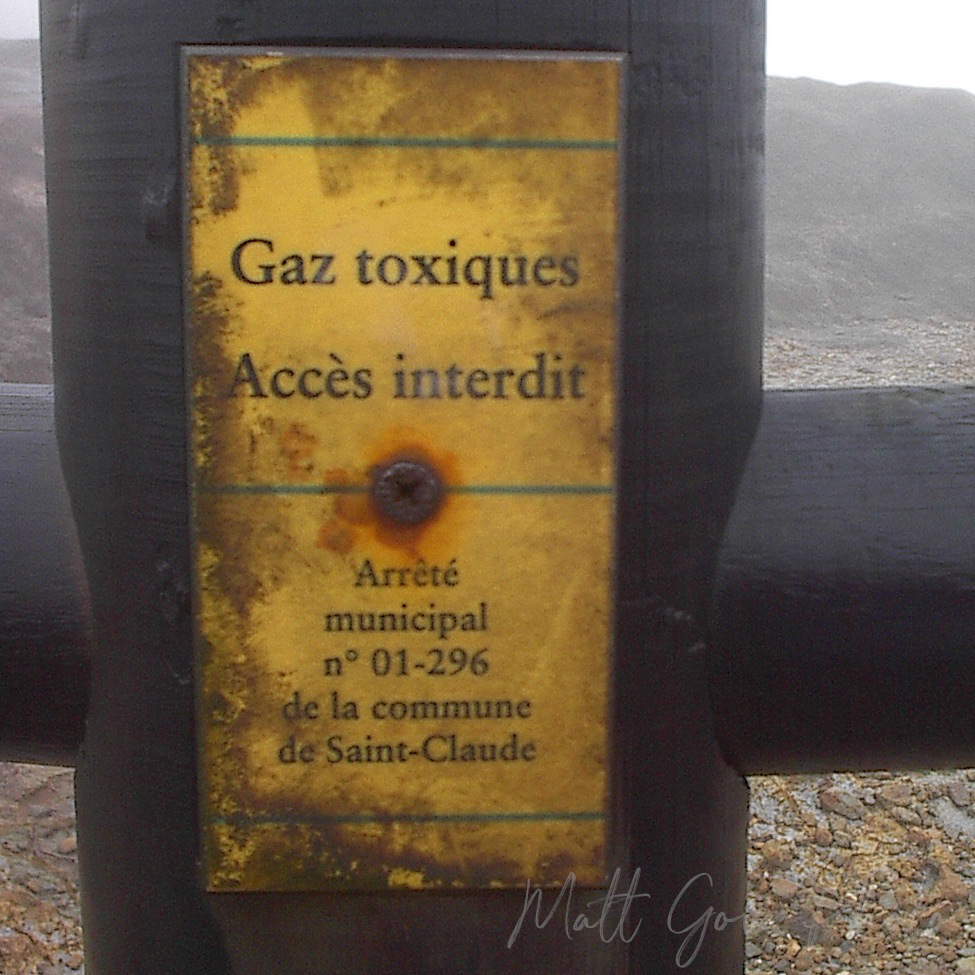The Democratic Republic of Congo (DRC) is one of the most fascinating countries in the world, with a deeply troubled past. Anthony Bourdain once called it “the most relentlessly fucked over nation in the world”, and also realized a decades long dream when he sailed down the Congo River. If you haven’t seen the Parts Unknown episode about Bourdain’s trip to the Congo, I highly recommend it. It’s absolutely captivating.
Since the world has still yet to fully reopen in the aftermath of the COVID-19 pandemic, let’s take a virtual trip. We’ll learn about just what makes the DRC so alluring to so many travelers. It’s a culturally rich country that offers as raw and wild of an African experience as you can get. Like the challenge of climbing Mt. Everest, the Democratic Republic of Congo draws seasoned travelers looking for the ultimate adventure.
[Congo] is a country, a subject so large, so complicated as to defy explanation—or any summing up in a sentence, a volume, an hour of television—or even ten hours of television.
Anthony Bourdain
In addition to learning about the Congo’s incredibly diverse geography, we’ll explore some history, culture, and other items that are uniquely Congolese.
1. The DRC capital, Kinshasa, sits across the river from Brazzaville. They are the closest capital cities in the world.
Just 4 kilometers (2.5 miles) separates downtown Kinshasa, the DRC capital, from downtown Brazzaville, the capital of the Republic of Congo. Despite that, it’s surprisingly difficult to cross between the two capitals. There are no bridges, so the only option is to take a ferry across. If you’re tempted to drive between the two cities, the fastest route is a six-hour drive. There is a plan to build a bridge between Brazzaville and Kinshasa, but it’s unclear if or when construction will get underway.
Another fun fact: believe it or not, you can also fly from Brazzaville to Kinshasa. It’s the shortest international flight in the world.
2. In 2015, Kinshasa passed Paris to become the largest French-speaking city in the world by population.
Logic would dictate that the world’s largest French-speaking city would be in France. And if it weren’t wouldn’t you think it would be a city like Montréal? Nope. That designation goes to Kinshasa, the Congolese capital. In addition to being the world’s largest French-speaking city, Kinshasa is also the most populous city on the African continent.
| City | Population |
|---|---|
| Kinshasa, D.R. Congo | 11.58 million |
| Paris, France | 10.85 million |
| Abidjan, Côte d’Ivoire | 4.8 million |
| Montréal, Québec, Canada | 3.54 million |
| Dakar, Sénégal | 3.52 million |
In addition, Kinshasa is now one of the world’s fastest growing megacities. The total population of the Kinshasa-Brazzaville binational metroplex now approaches 20 million. Furthermore, 44% of the world’s 300 million French speakers currently live in Sub-Saharan Africa.
Francophone Africa is growing so rapidly that by 2050, 85% of the world’s French speakers may be on the African continent. When combined with influences of West Africa’s native languages, French culture in Africa is truly a melting pot. It teases even the most seasoned adventurers with tantalizing new surprises in each new country and city you step foot in.
3. The Democratic Republic of Congo is Much Bigger than Most People Realize.
The DRC covers an area of 2,345,409 km2 or 905,400 mi2. That’s about two and a half times the size of Texas and 1.35 times the size of Alaska. If you overlay the DRC onto a map of the United States, its diagonals stretch from Miami to Minneapolis and from Dallas to Hartford.

If you overlay it over a map of Europe, it covers most of mainland Europe.

And for one final comparison, here’s how it sizes up compared to Alaska.

4. It Takes Months to Drive Across the DRC…If You Can Even Make It.
Driving in the Congo is not for the faint of heart. In fact, you have a far higher chance of successfully summiting Mt. Everest than you do of successfully driving across the DRC.
So why is it so difficult to drive across the Congo? It’s actually pretty simple.
- There are no roads in the DRC. The ones that do exist are dirt tracks hacked through the jungle that are barely passable in a four wheel drive at the best of times.
- Much of the DRC is thick, dense jungle and tropical rainforest. As a result, any roads hacked through this terrain are deep bogs and washed out mud holes.
- There are no mechanics or services outside of Congolese cities. You need to carry everything you need for your journey when you set off. If something breaks, you better have a replacement part or know how to fix it yourself.
And that’s before you consider all of the dangers from corruption, disease, and political instability in certain parts of the country.
Deadliest Roads: A Firsthand Look at the Insanity of Driving in the Congo
If you want a firsthand look into the wild insanity of Congolese trucking, watch the documentary below. The series highlights deadliest roads from all over the world, and I highly encourage you to check out episodes for other countries beyond the DRC.
In 2010, a Belgian couple became the first known people to successfully drive across the DRC in 20 years. It took them 2 months to cover the 2,500 km (1,500 mi) journey from Lubumbashi to Kinshasa in an old Toyota Land Cruiser.
When I read their blog, the event that stood out to me most occurred after one of their breakdowns. They walked to the nearest village to find a mechanic, and the first person they met said without hesitating, “Il n’y a pas de voitures ici” – there are no cars here. You can read about their adventure at Jalopnik (which includes a link to their blog). A quick Google Search will also reveal crazy and incredible stories of people’s attempts to cross the DRC by car.
5. French is the DRC’s Official Language, but Less Than Half the Population Speaks It.
However, this fact is powering an explosive growth of the French language across all of Francophone West Africa. Interestingly, the French language has only been in Africa for a little over 100 years. Belgium colonized what is currently the Democratic Republic of Congo in 1885, introducing both French and Dutch to the area.
The DRC was granted independence from Belgium on 30 June, 1960. Because French was so widely spoken in the surrounding countries, the new Congolese government voted to make French the country’s sole official language. Dutch is no longer present on the African continent.
While French is widely spoken in Congolese cities, it’s hard to find in rural areas. Residents of those rural areas have preferred to speak their native language. There are many native African tongues in the DRC, but the most common language you’ll find is Lingala.
Nowadays, most children are being educated in French instead of their native language. The new generation of French speakers is driving the growth of cities across Francophone Africa. Kinshasa is reaping the greatest benefits of that growth and rapidly becoming a modern, cosmopolitan city.
Keeping Your Congos Straight
Don’t confuse the French Language in Belgian Congo (the DRC) with the French Congo. That’s what is now the Republic of Congo. There was also a Portuguese Congo, which is what is now the Cabinda Province. Cabinda is a small coastal Angolan enclave wedged between the Republic of Congo and the DRC.
6. Names in the DRC Change All the Time
From 1971 to 1997, the DRC was called Zaire. Joseph Mobutu came to power following a coup in 1965, and he renamed the country in 1971. That marked the fourth time in eleven years that the name of the country had changed.
Amazingly, this is not the first time the DRC has been called the Democratic Republic of Congo, either. Mobutu coined that name following the 1965 coup, and the country used the DRC name until 1971. Prior to that, it had been known as the Congo Free State, the Belgian Congo, and Congo-Kinshasa.
After gaining independence in 1960, both Belgian Congo and French Congo claimed the name République du Congo (Republic of Congo). Both nations operated under the République du Congo name until Mobutu added “Democratic” to the DRC name in 1965. The former French Congo is still called République du Congo to this day. The official name of the DRC is République Démocratique du Congo.
And if you have trouble keeping up with the names of the country, try some of its cities. Here’s a short list of some of the DRC cities’ former names.
| Current Name | Former Names |
|---|---|
| Kinshasa | Léopoldville Leopoldstad Kinchassa |
| Lubumbashi | Élisabethville Elisabethstad |
| Kisangani | Stanleyville Stanleystad |
| Mbandaka | Coquilhatville Coquilhatstad |
| Ilebo | Port-Francqui Francquihaven |
Oh, and did I mention that in 2015, the DRC’s 11 provinces were split into 26 provinces, including the city-province of Kinshasa, and renamed?
7. The Democratic Republic of Congo is the Most Mineral-Rich Nation in the World.
If you’re looking for a little context about the Anthony Bourdain quotes mentioned above, here you go. The DRC is widely considered to be the richest country in the world…at least on a natural resource level. Its land is rich in many minerals that are widely coveted for use in modern technology, including cars, computers, and mobile phones. It’s also one of the world’s largest producers of cobalt, copper, and diamonds. Untapped deposits of raw minerals in the DRC are estimated to be worth US $24 trillion. Yes, that says trillion, with a T.
Lubumbashi is the Mining Capital of the DRC and the Capital of the former Katanga Province.
So why is the DRC among the poorest countries in the world from a GDP perspective? Decades of political corruption is the culprit. Going back to the DRC’s independence from Belgium in 1960, instability and corruption have been rampant in Congolese politics. In addition, first world countries have repeatedly exploited the DRC for its natural resources throughout its history. Put it all together, and you can understand the Anthony Bourdain quote.
It is the the most relentlessly fucked over nation in the world, yet it has long been my dream to see the Congo. And for my sins, I got my wish.
Anthony Bourdain
8. The Ebola Virus is Named After a River in the DRC.
In 1976, an outbreak on a mysterious disease killed nearly 300 people in the northern Congolese village of Yambuku. Epidemiologists initially thought the Marburg Virus was responsible for the outbreak. However, when microbiologist Peter Piot analyzed specimen samples at his lab in Belgium, he identified a new virus related to the Marburg Virus. In order to keep the village from being associated with the disease’s stigma, Piot named the virus after the nearby Ebola River.
The Ebola River’s name is actually derived from the French language. The correct term is legbala, which means “white water” in the local Ngbandi language. Because the “gb” sound in legbala does not exist in French, francophones simply called the river l’ébola. You pronounce that “lay-boh-lah”.
The Belgians tried to call the river Eau Blanche (which means “white water” in French) during their colonization of the DRC. However, l’ébola rolls off the tongue much better, so that was the name that ultimately stuck.
By the end of the initial Ebola outbreak in 1976, the disease had an astonishing 88% fatality rate. West Africa has suffered numerous ebola outbreaks since then. The most notable outbreak killed 11,323 people across Guinea, Sierra Leone, and Liberia in 2014.
Today, there are 6 known ebolaviruses, though only 4 cause disease in humans. The Zaire ebolavirus, which was the initial strain identified in the DRC in 1976, is particularly notorious. It has been responsible for the vast majority of ebola outbreaks in Africa, including the 2014 epidemic. Most sinister, it has been known to have a fatality rate as high as 90%. That means that if you contract the virus, there’s a 90% chance you’ll die from it.
Thankfully, there is now a vaccine against Ebola. A 2016 study found the VSV-ESOB vaccine to be 70 to 100% effective against ebolaviruses. The US Food and Drug administration approved the vaccine in 2019, making it the first ebola vaccine to be available to the general public.
9. Virunga National Park is Home to One Third of the World’s Mountain Gorillas.
Virunga National Park is one of the most biodiverse protected places on the African Continent and the world’s only facility for orphaned mountain gorillas. It’s a critical and vital resource for wildlife conservation in the region. Besides the gorillas, it’s home to colorful flowers, flourishing fruits, and some of the rarest animals on Earth.
Unfortunately, it also sits in the eastern Democratic Republic of Congo, one of the most unstable and violent regions on the African continent. Sitting near the point where four countries (Uganda, Rwanda, Burundi, and the DRC) come together, rebels have controlled the region for years. In recent years, park rangers, employees, and even tourists have become targets.
The conflict, which involves over 130 armed groups, defies any kind of reasonable logic. In addition to the struggle for land, resources, and power between the rebels, residents, and authorities, political power has been militarized. Put that near any international border, much less where four countries come together, and it doesn’t take much of a spark to set things off.
Despite the threats, Virunga National Park remains a popular tourism destination. The magical park is the only place in the world to see mountain gorillas in the wild. It remains a peaceful sanctuary in a region that has been torn by instability, chaos, and violence.
10. If that’s not enough adventure, hike to the summit of Mt. Nyiragongo and camp on the rim of an active volcano.
Yes, this is the same Mt. Nyiragongo that erupted just a month ago. Housing the world’s largest lava lake, Mt. Nyiragongo towers 3,470 m (11,385 ft) above the city of Goma. At night, the bubbling lava lake emits an eerie orange glow from the top of the volcano.
Nyiragongo’s most well-known eruption occurred on 17 January, 2002. A 13 km fissure opened south side of the volcano. The entire City of Goma was evacuated, with over 400,000 people taking shelter across the border in Gisenyi, Rwanda. The 1 km wide and 2 meter high lava flow plowed right though the center of Goma, effectively bifurcating the city. Lava covered the northern part of the runway at Goma International Airport before oozing into Lake Kivu.
Mt. Nyiragongo attracts the most adventurous hikers looking conquer the best of the DRC’s top-notch hiking. After hiking through dense tropical rainforest, you’re plunged into the mist at the top. You can camp in small huts at the summit. Amazingly, after last month’s eruption, those cabins are still standing.
They say you can hear waves of lava crashing over each other in the lava lake as you nod off to sleep. Having climbed to the summit of the La Soufrière Volcano in Guadeloupe, I can only imagine the awe you’d be in staring into the fiery belly of the earth on the rim of Mt. Nyiragongo.


Bonus: The Democratic Republic of Congo is World-Famous for Its Music
You may not have heard of many Congolese singers and musicians, but their influence can be felt all over the world. You just have to know where to look for it.
Stretching far beyond the borders of the DRC, you can find Congolese influences across French West Africa, the Caribbean, North America, and even France. One of my favorite aspects of Congolese music is how singers so flawlessly switch languages, from French to English to Swahili to indigenous languages such as Lingala and Kikongo. If you’re not paying attention, you probably won’t even notice. Check them out for yourself below.
Conclusion
There’s something magical and alluring about the Democratic Republic of Congo. The exotic plants, lush rainforests, and rare wildlife beckons even the most seasoned adventurer. Its French culture and influences forever teases the francophone in me.
But one must never forget the DRC’s troubled past. The current threats must be treated seriously. We must respect the Congolese people’s relentless perseverance and pride. Like Bourdain, I hope to be able to visit the Congo one day. Not so much for the adventure, but for its potential to be a truly life-changing experience. Especially with my affection for and knowledge of French culture and the French language.
I’ll end the same way I began: with an Anthony Bourdain quote. “The Congo is a place where everything is fine – until it isn’t.”
Top Photo: Clouds Crest a Ridge Line in the White Mountains
Mt. Washington Summit, New Hampshire – October, 2015